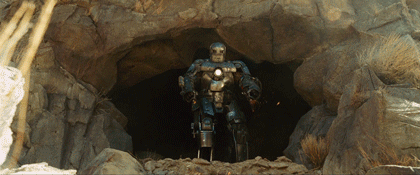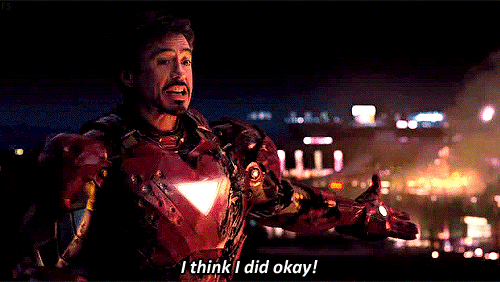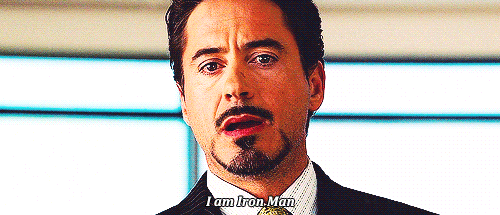
Whether you’re a super fan or you’ve just existed in this world for the past decade, you know Iron Man. Tony Stark, a genius, billionaire, playboy, philanthropist—played by Robert Downey Jr.—has been a cultural constant on-screen since his first movie dropped in 2008.
Since Avengers: Infinity War is dropping this month, we’re feeling a little nostalgic, and looking back at the first Iron Man movie for an unexpected reason—business advice.
After all, Tony Stark is arguably the sharpest entrepreneur in the Marvel Universe. He has his own insanely successful company, he’s a leader to his team, and an inventor to top it all off. He is his own superpower—and he developed his famous suit from the ground up.
Here are three great product development lessons from Iron Man to help you get your next idea off the ground.
#1. He Didn't Run with his Very First Idea
At the beginning of Iron Man, Tony is taken prisoner by a fictional terrorist group known as the Nine Rings. They want him to build weapons for them. Instead, he builds the first rough iteration of the Iron Man suit and uses it to escape. (He has a problem, he creates a solution.) It’s rough, unpolished, it has a flamethrower… and it gets the job done.
When he finally gets home, he immediately sets about taking the clunky suit and re-designing it with improvements. Rather than sticking with his first idea or design, Tony keeps what works, but focuses on what can be elevated and changes those. As an innovator, you can do the same. It’s easy to fall into the trap that the first idea is perfect. This is rarely true. Good ideas often start off incomplete. If you take a step back, you’ll see they could use some attention and finesse.
#2. He Repeatedly Tests His Product
Tony tests the Iron Man suit a LOT before he decides to present it to the world, or take it out for a spin.
Testing is a key factor in any entrepreneur’s process. Whether you’re developing a product or service, you want to to ensure the product is effective and fulfills the need of the target market. Testing methods like engaging focus groups are a great idea. In Tony’s case, he tests to make sure the product (super suit) is functioning and viable, to ensure it fulfills the needs of his target market (arguably himself).
In fact, there’s a whole montage of development in the film where we see him troubleshoot in his lab. He figures out flight. He makes mistakes, and he learns from them. Which leads us to our last point...
#3. He Uses His Glitch In Unexpected and Innovative Way
During one product test, Tony flies the suit too high. The armour becomes covered in ice from the extreme altitude, his systems fail, and he nearly plummets to his death.
Decade old spoiler alert: this design glitch is how he defeats the film’s big bad, Warmonger. Warmonger’s armour is knock-off of Tony’s, so our hero takes something that went wrong with his own design and uses it to his advantage.
This happens all the time—setbacks becoming learning opportunities. The truth is, failing can give you an edge on your competitors. What’s more, sometimes if a product isn't working for it's ORIGINAL purpose, recycling it to another is possible. Bubble wrap was supposed to be wallpaper. Penicillin was accidentally discovered in a search for the wonder drug. You can use ideas or hiccups in unexpected ways—it’s all about context.

A Bonus Lesson on Personal Branding:
#4. He IS his brand.
“I am Iron Man.”

At the end of the film, Tony reveals his truth to the entire world. He leaves his secret identity behind. Maybe it’s ego, maybe it’s an incredible lesson in personal branding. Tony built the Iron Man suit. He recognizes that the product and the brand are synonymous with his identity. In more than one way he IS his product, and he chooses to embody it.
You are an ambassador of your brand. You embody your brand. Live that.
